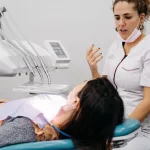If you’ve been prescribed Doptelet and the price tag made you gasp, you’re not alone. Many patients face the same shock when they see the list price, but the good news is that there are proven ways to slash that bill—sometimes down to $0. Below, I’m sharing a friendly, step‑by‑step guide that shows exactly how you can get the medication you need without draining your wallet.
Think of this as a conversation over coffee: I’ll walk you through the numbers, the programs, and the little tricks that most people miss, all while keeping the tone relaxed and supportive. Ready to take control of your Doptelet cost? Let’s dive in.
Understanding Price Basics
The first thing to grasp is the difference between the Doptelet price you see on a pharmacy shelf and the amount you actually pay after insurance and assistance programs. In 2025 the average retail price hovers around $3,500 for a 30‑day supply, but that figure can swing wildly based on location, pharmacy contracts, and whether you have a formulary tier that applies a higher copay.
Insurance plays a huge role. If Doptelet lands on a higher tier, you might face a 30‑40% coinsurance—meaning you could owe $1,000 or more out of pocket. On the other hand, some commercial plans negotiate better rates, dropping the cost dramatically. According to the official Copay Assistance page, eligible patients can see their bills reduced to $0 per prescription, with an annual cap of $15,000.
Eligibility Rules
Not every program fits every patient, so it’s essential to know the eligibility criteria. Here’s a quick rundown:
- Copay Assistance Program: Must have commercial prescription insurance, be 18 years or older, and NOT be enrolled in Medicare, Medicaid, VA, DOD, or TRICARE.
- Patient Assistance Program (PAP): Open to uninsured or under‑insured patients who meet income thresholds (typically ≤ 400 % of the Federal Poverty Level).
- Bridge Program: Designed for patients waiting on insurance approval; provides a short‑term supply while paperwork is processed.
Understanding these categories helps you avoid the frustration of applying for a program that won’t accept you.
Assistance Programs
Copay Assistance – $0 Per Prescription
This is the most popular option for those with commercial insurance. The program covers the full copay up to an annual benefit of $15,000. “Void where prohibited” means the program can’t be used in states that ban such assistance, but most states allow it.
Patient Assistance – Free Medication
If you’re uninsured or your insurance isn’t covering Doptelet, the PAP can provide the medication at no cost—provided you meet the income and documentation requirements. The application usually asks for recent tax returns, a copy of the prescription, and a physician’s letter of medical necessity.
Bridge Program – Short‑Term Relief
Ever been stuck waiting for a prior authorization while a procedure looms? The Bridge Program fills that gap, giving you a limited supply (often 10–15 days) until your insurance says “yes.” It’s perfect for time‑sensitive scenarios.
Quick‑Reference Checklist
| Program | Eligibility | Benefit | Key Limitations |
|---|---|---|---|
| Copay Assistance | Commercial insurance, ≥ 18 y | Up to $15,000 annual, $0 per Rx | Not valid in prohibited states |
| Patient Assistance | Uninsured/under‑insured, income ≤ 400 % FPL | Free medication | Income verification, longer processing |
| Bridge Program | Pending authorization, any insurance | Short‑term supply (10‑15 days) | Limited quantity, must reapply after use |
Step‑by‑Step Apply
Gather Your Paperwork
Before you pick up the phone, collect the following items:
- Written prescription for Doptelet (including dosage).
- Insurance card (front and back).
- Recent pay stub or tax document (for PAP).
- Photo ID.
- A physician‑signed Letter of Medical Necessity (downloadable from the Access Guide).
Choose the Right Portal
There are three main ways to submit your application:
- Doptelet Connect – an online portal that guides you through the copay or PAP enrollment.
- Pharmacy submission – many specialty pharmacies will handle the paperwork for you if you give them a call.
- Phone call – dialing 1‑833‑368‑2663 (available Mon‑Fri, 8 am‑8 pm ET) connects you directly with a trained specialist who can walk you through the process.
Submit and Follow Up
Once you’ve filled out the online form or mailed the documents, most copay applications are approved within 3‑7 business days. The PAP can take 2‑4 weeks, so start early if you know you’ll need the drug soon. Keep the confirmation number handy and don’t hesitate to call the support line for status updates.
Sample Email to Your Pharmacist
Subject: Request for Doptelet Cost Assistance EnrollmentHi [Pharmacist Name],I hope you're doing well. I'm writing to start the enrollment process for the Doptelet Copay Assistance Program (or Patient Assistance Program). I have attached my prescription, insurance card, and a recent pay stub. Please let me know if anything else is needed.Thank you for your help!Best,[Your Name]
Saving Tips
Use a Pharmacy Discount Card
Even if you’re in a copay program, a free discount card like the one offered by GlicRx (according to PharmacyChecker) can shave an extra 10‑20 % off the retail price for any additional fills.
Ask About Compounding Options
Although Doptelet has no generic equivalent, some specialty compounding pharmacies can create a custom formulation that may be less expensive. Always verify that the compounding pharmacy follows FDA guidelines.
Combine Programs Wisely
Never “double‑dip.” If you qualify for the $0 copay program, you can’t also use the PAP for the same prescription. However, you can use a discount card for any refills after the annual $15,000 cap is reached.
Comparison Table
| Feature | Copay Assistance | Patient Assistance | Discount Card |
|---|---|---|---|
| Cost to Patient | $0 per Rx (up to $15k/yr) | Free (if eligible) | 5‑20% off retail |
| Eligibility | Commercial insurance only | Income ≤ 400 % FPL | Anyone |
| Application Time | 3‑7 days | 2‑4 weeks | Immediate (online) |
| Annual Limit | $15,000 | No limit (subject to income) | None |
Cost Comparison
When you weigh Doptelet against other platelet‑boosting drugs like eltrombopag (Promacta) or romiplostim (Nplate), the price gap narrows once assistance is applied. For example, the list price of eltrombopag can be $4,000 for a month’s supply, but many insurers also have copay programs that bring it down to a similar range. However, Doptelet’s once‑daily oral tablet often makes it the preferred choice for patients who want to avoid weekly injections.
From a risk standpoint, all TPO‑RA medications share similar safety profiles—thrombotic events, headache, and liver‑related concerns appear across the board. Your doctor will weigh those clinical factors alongside cost when recommending the best option.
Real Stories & Expert Insight
Patient Tale: From $3,500 to $0
Emily, a 58‑year‑old with chronic liver disease, called the 1‑833‑368‑2663 line after seeing a $3,500 bill. A friendly representative walked her through the Copay Assistance enrollment, she mailed her insurance card and physician’s letter, and within five days the pharmacy called to say her next fill would be fully covered. “I felt like I could breathe again,” Emily told me, “and I didn’t have to worry about my mortgage payment this month.”
Pharmacist’s Perspective
John, a board‑certified pharmacy specialist, says, “Most patients think they have to accept the list price. If they ask about the formulary‑lookup tool or the copay portal, they’re often surprised at how much can be saved.” He recommends keeping a printed copy of the Formulary Lookup Tool handy during every doctor visit.
Hepatology Expert Opinion
Dr. Maya Patel, a hepatologist at a major academic center, notes, “When a patient is eligible for financial assistance, we’re more likely to prescribe Doptelet because we know the barrier is lower. The clinical benefit—raising platelets quickly before a procedure—can be lifesaving.” She references the 2024 AASLD guideline, which lists cost‑effectiveness as a key consideration when choosing a TPO‑RA.
Trusted Resources
Below are the go‑to sites you’ll want to bookmark while navigating Doptelet cost assistance:
- Doptelet Access & Financial Assistance Hub – official program details, enrollment forms, and phone support.
- PharmacyChecker price comparison – real‑time local pharmacy pricing and discount card info.
- Sobi Privacy Policy – explains data handling for the assistance programs.
- National Kidney Foundation’s Medication Cost Help Guide – broader financial help options beyond Doptelet.
- FDA’s official Doptelet prescribing information – for safety and dosing details.
Final Thoughts
Let’s recap the three key actions you can take right now:
- Identify the program that fits you. If you have commercial insurance, start with the Copay Assistance; if not, explore the Patient Assistance Program.
- Gather the required documents and apply promptly. The sooner you start, the faster you’ll get the medication you need.
- Use additional savings tools. A discount card or a pharmacy’s own coupons can shave extra dollars once your primary assistance reaches its limit.
Managing medication costs can feel overwhelming, but you don’t have to go it alone. Use the resources above, lean on your healthcare team, and remember that many patients have walked this path and successfully reduced their bills. If you have questions, share them in the comments—let’s help each other keep our health (and wallets) in good shape.


















Leave a Reply
You must be logged in to post a comment.